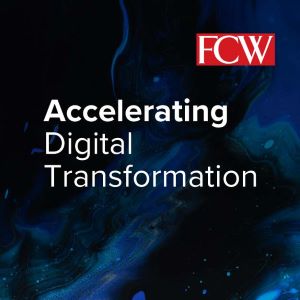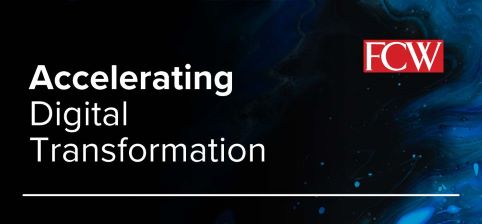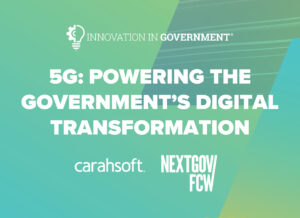The pandemic has highlighted the urgency of modernizing government systems and propelled agencies forward on their journey to digital transformation. In a recent survey of FCW readers, 71% of respondents said the pandemic had accelerated their agencies’ efforts to modernize IT. A successful digital transformation has certain key elements. Agencies must be able to protect and fully utilize their data, make optimal use of cloud technology, and take advantage of the latest developments in telecommunications. Those elements are not self-contained, but interlocking and overlapping. Therefore, fitting all the pieces together requires a holistic approach. In a digital-centric government, policymaking and service delivery are driven by data. The customer experience is more satisfying because it has the right balance of security and convenience. Government employees collaborate with one another seamlessly and securely regardless of location. And agencies have agile, intelligent platforms and infrastructure that support innovation in even the most challenging conditions. Achieving that vision is a struggle for many agencies, but there are signs of progress. As agencies take a more comprehensive approach to modernization, they will make rapid progress on improving public-facing and back-office operations. Learn how that progress will lead to even bigger improvements and the capacity to tackle ever-greater challenges in Carahsoft’s Innovation in Government® report.
5G: Real-Time Operations at the Enterprise Edge
“The era of real-time analytics In the past, government agencies didn’t have many real-time tasks to manage. But now we are moving into the era of machine learning, artificial intelligence, real-time analytics, high-performance telemetry, management tuning and dynamic infrastructure. It’s important to make sure that data and processing exist in a place that can operate in real time, and that place is not the enterprise data center or even public clouds. Instead, real-time operations should happen close to where users are — at the enterprise edge. 5G environments have an edge very close to the mobile user, maybe in the cell site itself. Other edges exist further into the backhaul and create an aggregate set of compute and processing capabilities that bring this next-generation intelligent connectivity and processing into the mobile experience.”
Read more insights from Dell’s Technology Strategist, Chris Thomas.
Navigating the Complexities of Cloud Repatriation
 “There are many factors that might prompt agencies to consider moving to another cloud environment, including cost, application performance, security and data protection requirements. In most public clouds, applications with frequent data uploads or downloads will typically incur higher-than-normal hosting costs due to ingress and egress charges. Ideally, agencies should have a consumption model that aligns with their data access needs. Similarly, depending on the volume of data and the location of users and adjacent applications, latency may be introduced into application processing, which will present itself to users as poor performance.”
“There are many factors that might prompt agencies to consider moving to another cloud environment, including cost, application performance, security and data protection requirements. In most public clouds, applications with frequent data uploads or downloads will typically incur higher-than-normal hosting costs due to ingress and egress charges. Ideally, agencies should have a consumption model that aligns with their data access needs. Similarly, depending on the volume of data and the location of users and adjacent applications, latency may be introduced into application processing, which will present itself to users as poor performance.”
Read more insights from Dell’s Senior Director of Federal Presales, Michael Byrne.
A Modern Approach to Data Protection
“Cloud technology opens up enhanced capabilities to protect one of the most important resources that government agencies have: their data. Those capabilities include maintaining archive copies, establishing or further extending best practices for data backup, and creating an isolated and immutable copy of data that is recoverable should there be a cyber incident. In fact, isolation and immutability are essential techniques that can help agencies protect critical data from ransomware and other sophisticated threats. The overarching goal is to achieve cyber resilience, which is a combination of information security, data protection and cyber recovery.”
Read more insights from Dell’s Advisory Systems Engineer for Cyber Resilience, Jason Proctor.
The 7 Pillars of a Zero Trust Architecture
“Agencies already have substantial investments in cybersecurity tools they can leverage as they move to zero trust. They can start by taking stock of the applications, practices and services they are currently using that support zero trust principles. Which ones are missing? And which tools does an agency have that it’s not using? New products are often deployed without enabling their full security capabilities, so agencies should consider what untapped features in their existing tools could help them enhance their cybersecurity posture. Then they can identify what they need to purchase to fill any gaps.”
Read more insights from Dell’s Field CTO for Cybersecurity, Daniel Carroll.
A Dynamic Way to Create Hybrid Cloud Environments
“When agencies are deciding which workloads belong in a public cloud versus an on-premises environment, it’s rarely a point-in-time consideration. Instead, that determination often includes anticipating future changes. Although agencies may be entirely on-premises today, they may intend to move at least a portion of today’s on-premises workloads to a public cloud in a couple of years, and they are looking to vendors to help them make that transition. APEX Flex on Demand allows customers who are buying compute, hyper-converged, converged or storage solutions to acquire what they need today while giving them some flexibility for what they may need or may not need tomorrow if or when they move workloads between on-premises and public clouds.”
Read more insights from Dell Financial Services’ Vice President, Mike Sullivan.
Download the full Innovation in Government® report for more insights from these digital transformation thought leaders and additional industry research from FCW.







